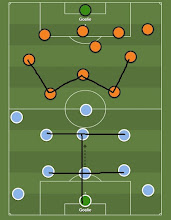A few top goalkeepers were unable to be the first choice while joining the
elite sides and forced to be the understudy.
The top goalkeepers with established roles in the previous clubs or in the
national team would certainly expect the same status when they decided to
switch sides to the top sides. Unfortunately, such is never easy. Signing for
the elite team might be tempting to add silverware to their collection. Yet,
lifting trophies without playing regularly would not be ideal.
Barcelona’s new signing, Wojciech Szczesny, might be one recent example of
such. The former Poland international joined the Catalan side following Marc
Ter Stegen’s long-term injury. Fans would hope to see the former Arsenal and
Juventus man in action between the sticks. Yet, his status might not change
after Ter Stegen’s understudy, Inaki Pena’s top form in the first El Clasico
this season. He was able to keep a clean sheet and make crucial saves to keep
Real Madrid’s stars at bay. Szczcesny is likely to wait longer for his debut
with the Catalan giant.
The 34-year-old goalie is not the first to experience such. There have been
other well-known shot stoppers who used to be in the same circumstance. Here
are those unfortunate figures.
Jens Lehmann (AC Milan 1998/99)
The former Arsenal goalkeeper rose to prominence in the mid-1990s as he
became the key figure in Schalke’s unlikely success in snatching the 1997 UEFA
Cup. Lehmann contributed heavily in the final, when they beat Inter Milan on
penalties. The German managed to frustrate Nerazzurri, as he was able to only
concede one goal in the second leg. He also saved their penalties in the
shootout. As a result, he was included in Germany's final squad for the 1998
FIFA World Cup.
Lehmann, aged 29 at that time, opted to switch sides to AC Milan after the tournament. At first, things went well as he featured in the first two matches until the nightmare came while Rossonerri faced off Gabriel Batistuta’s Fiorentina. He conceded by the Argentine star’s hattrick as his team were hammered 3-1. Although his form improved while beating Venezia on the road in the following week, Lehmann was eventually sidelined due to his average poor display. The former German shotstopper soon left San Siro to sign for Dortmund after only a year in Italy.
|
Appearances |
Clean sheets |
Notable matches |
|
6 |
2 |
Venezia vs AC Milan 0-2 (made four clinical saves) |
The former Barcelona goalie during
their golden era in the 2000s signed for Manchester United in January 2015
following his injury and failed move to AS Monaco in summer 2014. He had won
three UCL and five La Liga with the Catalan giant, making him the most
successful La Masia goalkeeper who had been the first choice in the senior
sides.
Unfortunately, his move to Old
Trafford did not work out as expected as he mainly became David de Gea’s
understudy. Valdes, aged 32, at that time, only made two appearances in total with the first team! He was even already put on the transfer list and not given
the squad number after the former Barcelona man refused to play with the
reserve team.
After being frozen out of the squad
for almost six months, he was loaned out to Belgium’s Standard Liege in January
2016 and helped them snatch Belgian Cup before he was released by United and
joined Middleborough in summer 2016. Valdes stayed in Riverside till 2018, when
he decided to retire.
|
Appearances |
Clean sheets |
Notable matches |
|
5 (3
with reserve team) |
1 |
Hull City vs Manchester United 0-0
(2014/15)(made two clinical saves) |
Rustu Recber (Barcelona
2003/04)
He was one of the star in 2002 FIFA
World Cup as he helped Turkey reach semifinal, their best result to date.
Recber was able to keep the clean sheets in three games during the competition
and almost frustrated the eventual champion, Brazil, before Ronaldo Luiz broke
the deadlock with his wonder goal.
In 2003, the former Turkish
international was on the verge of moving to Arsenal but it did not materialize
as he was offended when Arsene Wenger questioned his fitness. He then chose to
sign for Barcelona instead after holding the talk with Barcelona president, Joan Laporta. The chance
to play for one of the biggest clubs in the world was too good to turn down.
Sadly, his stint in Camp Nou was not
memorable at all. Rustu’s inability to speak Spanish cost him the first choice spot. His boss, Frank Rijkaard preferred to count on the young Victor Valdes
between the sticks till he cemented his place for years. Such meant the end of
his time in Spain. The then 30-year-old goalie eventually returned to his
former side, Fenerbahce and never played abroad again.
|
Appearances |
Clean sheets |
Notable matches |
|
7 |
3 |
Barcelona vs Celta Vigo 1-1 (made four clinical saves but also
one crucial error leading to conceding at the first half) |



Comments
Post a Comment